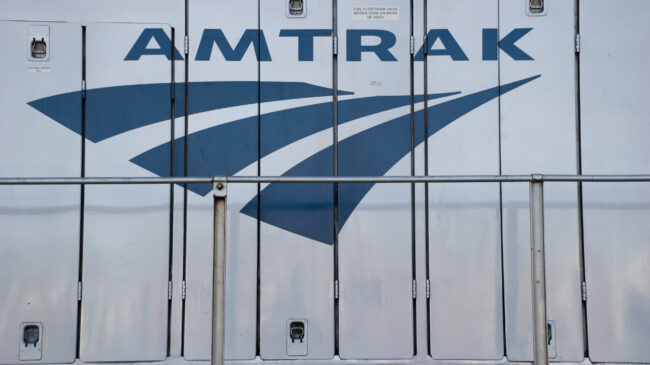The Infrastructure Investment and Jobs Act signed by President Joe Biden last year included $66 billion for rail. Of that $66 billion, barring any recissions from a future Congress, at least $18 billion is available for the expansion of Amtrak services across the United States.
Amtrak takes in extensive federal subsidies, fails to make a profit, and has a notorious history of being anything but cost-efficient. Rather than pour billions more into Amtrak, taxpayers’ money could’ve been better spent on alternatives, such as more cost-efficient intercity bus service and further improvements to existing highway infrastructure. Private bus operators have demonstrated the ability to alter their routes and schedules make bus routes a more appealing alternative to frequently delayed Amtrak lines.
Instead of identifying cost-effective transportation solutions, the unprecedented funding boost for Amtrak in the infrastructure bill was marketed as a means to “modernize” the aging rail system. Not even Amtrak’s most used and popular Northeast Corridor, which runs through eight states with fast Acela service between Washington, DC, and New York City, among others, is self-sustaining. The Northeast Corridor alone had a $38 billion maintenance backlog as of 2017.
Amtrak says it will spend a portion of the infrastructure bill’s funding on the Northeast Corridor. Amtrak hopes to spend a lot of the remaining money trying to emulate the Northeast Corridor in other parts of the country, which should be met with apprehension.
The most recent example of Amtrak’s efforts to expand rail service is its push to restart the Gulf Coast line, a twice-a-day route between New Orleans, Louisiana, and Mobile, Alabama. The route had the highest taxpayer subsidies of any Amtrak route before service was suspended due to Hurricane Katrina in 2005.
Amtrak’s Gulf Coast line proposal would make taxpayers prop up a financially unsustainable service. Amtrak’s fiscal year 2022-to-2027 forecast for this route found it would operate at a loss of $27 million each year, or $373.4 per passenger of the 72,200 projected to ride annually by 2027.
Typically, Amtrak participates in an impact study to see how a proposed rail service would affect an area, but they’ve abandoned the study for the Gulf Coast line and are trying to move ahead. Proponents of the line hope it will have a positive economic impact, but given the projected $30.5 million annual costs to keep it operating in 2027, that seems unlikely.
But two of the states on the route offered their own money to match the $33 million in federal cash: Louisiana pitched in about $10 million and Mississippi around $15 million. The states would have to pay the full bill in five years’ time, with the federal government providing 20% less funding each year. States would be picking up the tab for a twice-a-day passenger rail line with only about 197 passengers a day.
In judging Amtrak, it is important to note that the true cost of Amtrak is often hard to calculate, thanks to the accounting tricks used to cover Amtrak’s losses. Despite being run as a “for-profit” entity in a government-ensured monopoly, Amtrak has never actually made a profit and has two methods to mask its losses from the public eye, rail critic Randal O’Toole, a former senior fellow at the Cato Institute, noted in 2019.
The railroad inflates its revenues by considering subsidies from 17 states as passenger revenues. In 2020, Amtrak’s profited 50 cents per passenger-mile in revenue, according to the Bureau of Transportation Statistics, but that is based on Amtrak’s phony accounting, which also fails to include depreciation in its expenses, despite maintenance problems needing to be addressed. Amtrak also enjoys special treatment under federal law. Freight railroads must allow Amtrak to use their tracks and give Amtrak trains priority over freight trains on the tracks. Amtrak only owns about 3% of their track, nearly all of that in the Northeast Corridor.
With the importance of freight rail for supply chains across the U.S., we must also consider economic activity potentially lost due to freight trains being delayed. The Port of Mobile has generated around $26.8 billion in economic value for the region. Jim Lyons, chief executive officer of the Alabama Port Authority, said that freight company CSX makes up about 65% of the rail activity in the Port of Mobile, and the past passenger rail caused “big headaches for freight activity in Mobile.” Lyon’s opposes the Gulf Coast line.
In the Gulf Coast line’s case, if the goal is to expand passenger rail service in the region, it would be easier if Amtrak tried to foster a cooperative relationship with freight railroads. Yet Amtrak has had a strained relationship with Norfolk Southern and CSX, the two rail companies that own the rails between New Orleans and Mobile. When the rail companies asked Amtrak to better accommodate both passenger and freight rail without as many delays, Amtrak called it a “ransom,” and their approach has been far from collaborative.
More broadly, many proponents of passenger rail in the United States want to try to copy the European approach of large passenger rail subsidies but rail is far more critical for freight movement in the U.S. than it is in Europe. In 2020, freight rail carried 27.4% of all cargo weight in the U.S., whereas in the EU, it carried 16.8%.
By operating its rail lines primarily for passengers, Europe ended up having to rely more on trucks for cargo, and trains for people. The U.S. did the opposite and relies on freight to move goods. Thus, when freight railroad tracks are forced to prioritize passenger rail, everybody loses. Crowding freight rail could also lead to greater traffic congestion on highways if freight companies have to ship even more goods via truck.
Amidst numerous supply-chain issues leading directly to American consumers paying more for everyday items, weakening a critical link in our supply chain seems ill-advised.
Instead of asking taxpayers to prop up more money-losing routes across the nation, we should look to alternatives that require no (or smaller) per-passenger subsidies and less interference with freight rail.
Intercity bus carriers, for example, require almost no subsidy compared to Amtrak’s roughly $0.36 per passenger mile. Travel times are comparable in many regions. And, in some corridors, including along the Gulf Coast, intercity bus is faster than rail.
The Gulf Coast line is a poor use of taxpayers dollars, but it’s just one example of Amtrak’s wasteful ineffectiveness. The billions in additional Amtrak spending already approved could’ve been put to better use improving existing infrastructure that more people use. Now, other states should examine the Gulf Coast line before contributing their own funds to Amtrak expansion projects that they could find themselves subsidizing for years to come.

